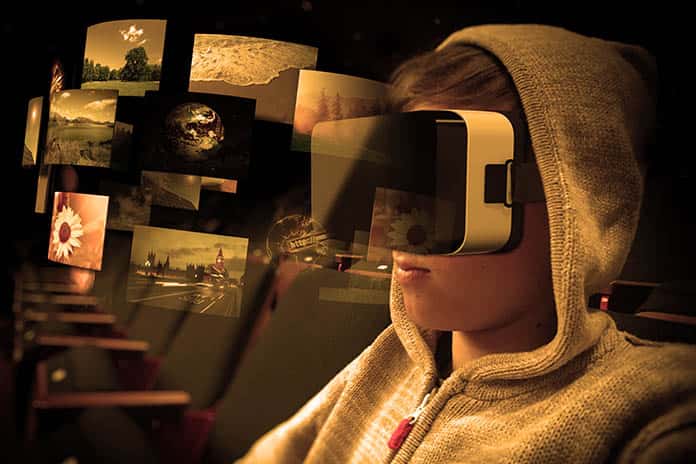Augmented reality is gradually reaching many areas of our lives. Without a doubt, one of the sectors in which it is most useful is in education, since it can be a powerful learning tool. However, how to apply augmented reality in education? What are the advantages that they offer to teachers and students?
What Do We Understand By Augmented Reality In Education?
Augmented reality can be defined as that technology that allows adding virtual elements to a real image that is visualized through an electronic device. For this, markers or codes are usually used that, when focused with an adapted device, project a virtual image onto a real image, thus creating a transformed reality.
Augmented reality in education is part of what are called emerging pedagogies. These teaching techniques are defined as those pedagogical ideas that arise around Information Technologies and that propose new educational approaches based on collaboration, interaction, creativity and innovation.
The objective of augmented reality in education is to build environments with a high degree of participation and interactivity, in which the student is able to build, design, modify, experiment and become much more actively involved in the learning process.
In this sense, it highlights its ability to create what are called interactive or virtual classrooms, which provide greater immersion for students and enhance their interest in the subjects. Below we delve further into the relationship between augmented reality and education.
How Can Augmented Reality And Education Be Integrate?
Augmented reality is a relatively young technology. It has been used in the educational field for years, but there is no doubt that its implementation is still scarce. There is still a long way to go to take advantage of this technology in the classroom, but there are already numerous ways to integrate augmented reality in education.
In Textbooks
One of the most common ways to integrate augmented reality in education is through bookmarks in textbooks. QR codes are often used which, when focused on the mobile phone, offer hyperlinks to other complementary information.
In The Contents
The augmented reality in colleges and schools is not exclusively for textbooks. Very useful applications can be created by adding markers on any type of objects, which allow superimposing virtual information on them.
For example, imagine creating a marker on a world map where, depending on the continent you focus on, extra information will be offered about that part of the planet. Geography classes would be much more enjoyable and productive!
In Vocational Training
The vocational training is another area where you can take advantage of augmented reality. Among the great advantages, it offers us the possibility of recreating real and practical work situations on which the student can work.
The 3D object modelling applications are especially interesting, in which the student can visualize, zoom in, rotate, rotate and, ultimately, manipulate virtual objects. It is a way to bring students closer to professional practices without leaving the classroom. Ideal for training centres and secondary education.
Advantages Of Using Augmented Reality In Education
These are the main advantages of augmented reality in education:
- It offers a more emotional and immersive experience, which attracts the interest of students.
- Thanks to this immersive and interactive experience, it facilitates the learning and transmission of concepts.
- It increases the motivation of the students, making the classes more enjoyable and interesting.
- Encourage participation thanks to interactivity.
- Break the traditional monotony of classes thanks to the use of technology, offering incentives to learn.
- It allows students to exploit the subjects and their closest reality from another perspective.
- Prepare students for the digital age.
Conclusion
In short, augmented reality in the education sector is a resource that offers many possibilities but still has a long way to go. Against him, he has the reluctance that new technologies still create in many schools and teachers. In their favour, those who try it are immediately convinced of the possibilities it offers to teachers and students.



